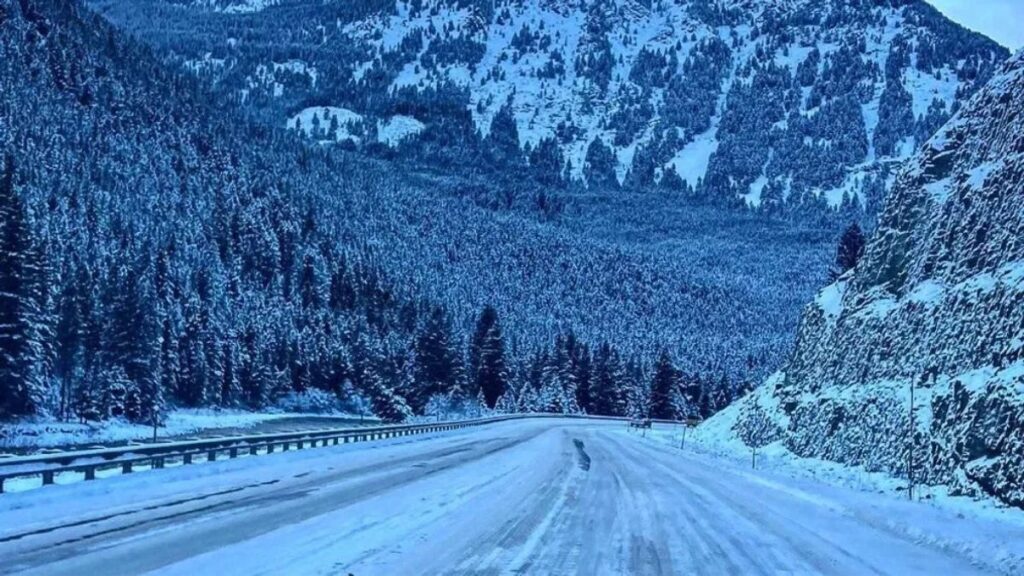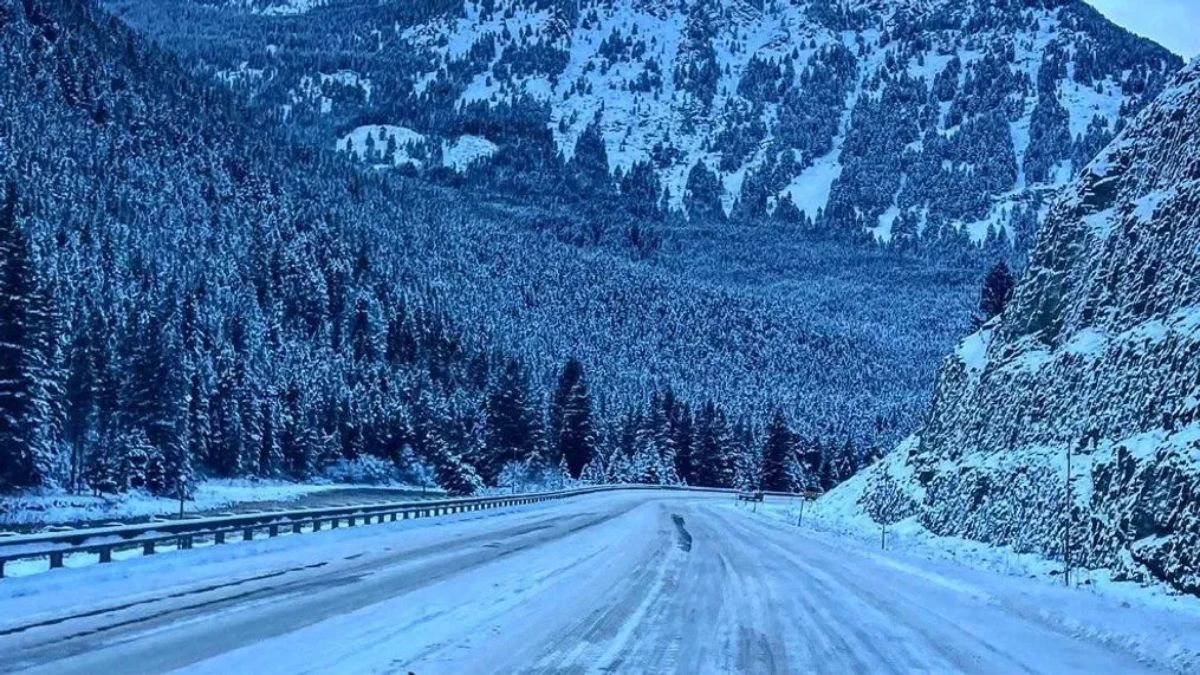Yes, it snows in Montana. Different regions within the state commonly experience snowfall in winter. Average winter temperatures in Montana range from below-freezing to slightly above freezing. In cities like Missoula, average highs are in the mid-30s Fahrenheit, while lows are in the mid-teens Fahrenheit.
Billings sees highs in the 30s to low 40s Fahrenheit and lows in the low 20s Fahrenheit. Great Falls has highs in the low to mid-30s Fahrenheit and lows in the single digits Fahrenheit.

Montana is the fourth-largest state in the United States. It is known for its stunning landscapes, diverse wildlife, and outdoor recreational opportunities. With the vast mountain ranges and cold temperatures, people wonder if Montana experiences snowfall.
In this article, we will explore the geographical and climatic characteristics of Montana and answer the question: does it snow in Montana?
Location Overview
Montana is a state located in the western region of the United States. It is the fourth-largest state in terms of land area, covering approximately 147,040 square miles. Bordered by Canada to the north, Montana shares its borders with North Dakota, South Dakota, Wyoming, and Idaho.
Montana is geographically known for its diverse topography, including vast plains, majestic mountain ranges, and stunning valleys. The Rocky Mountains dominate the western part of the state, while the Great Plains stretch across the eastern part.
The state has abundant natural beauty, featuring pristine lakes, expansive forests, and iconic national parks. Glacier National Park, located in northern Montana, showcases towering peaks, glaciers, and alpine meadows.
Montana’s population is relatively low compared to its size, making it one of the least densely populated states in the country. The largest city in Montana is Billings, followed by Missoula, Great Falls, and Bozeman. The capital city of the state is Helena.
Climate of Montana
The geographical location and diverse topography largely influence Montana’s climate. The state is located in the western region of the United States. Montana’s climate can be categorized as a continental climate, characterized by cold winters and warm summers.
Winter temperatures can drop significantly, especially in mountainous regions. While summer temperatures are generally pleasant but, hot conditions can occur in certain areas.
Historical Snowfall Record
Snowfall is not an uncommon occurrence in this state of the United States. Montana has witnessed several snowfall records over the years.
One notable event occurred in 2014 when an intense winter storm dumped an astonishing 22 inches of snow in a single day in the city of Great Falls. This event broke the previous daily snowfall record for the city, highlighting the potential for heavy snowfall in certain areas of Montana.
Winter Season & Snowfall Pattern
Winter in Montana is generally long, cold, and marked by significant snowfall. The state experiences a range of snowfall amounts due to elevation and geographic location variations.
The mountainous regions, such as the Rocky Mountains, are particularly prone to heavy snowfall due to orographic lifting, where the air is forced to rise over the mountains, leading to increased precipitation.
Montana exhibits a considerable variation in snowfall patterns across different regions. The western part of the state, particularly the mountain ranges, receives substantial snowfall in winter. These areas can accumulate several feet of snow, creating ideal conditions for winter sports enthusiasts.
In central and eastern Montana, snowfall is generally lower than in western regions. Cities like Billings and Miles City experience fewer snowfall days and lighter accumulations due to the rain shadow effect caused by the Rocky Mountains.
Locations to Enjoy Snow
Montana offers numerous locations to enjoy the beauty of snow and engage in various winter activities. Here are some notable destinations in Montana that are perfect for snow enthusiasts:
- Big Sky
Located in southwestern Montana, Big Sky is renowned for its world-class skiing and snowboarding opportunities. With its vast ski terrain, including the famous Big Sky Resort, visitors can experience exhilarating runs and breathtaking mountain views.
- Whitefish
Nestled in the northwest corner of Montana, Whitefish is home to Whitefish Mountain Resort. The resort features excellent skiing and snowboarding trails, charming alpine villages, and a vibrant après-ski scene. The town itself offers a cozy atmosphere with quaint shops and restaurants.
- Red Lodge
Situated in southern Montana, Red Lodge is a gateway to the Beartooth Mountains. Red Lodge Mountain offers diverse terrain for skiers and snowboarders of all levels. Additionally, the scenic Beartooth Highway provides stunning winter vistas for those who enjoy snow-filled road trips.
- Glacier National Park
While the park is primarily known for its summer beauty, Glacier National Park transforms into a winter wonderland during the colder months. Cross-country skiing, snowshoeing, and winter hiking are popular activities. The park’s serene landscapes and frozen lakes provide a peaceful winter experience.
- Bozeman
Bozeman is a vibrant city in southwest Montana, surrounded by mountains and outdoor recreation opportunities. Bridger Bowl, a nearby ski area, offers challenging slopes and breathtaking views. The city itself provides a lively après-ski scene, with cozy restaurants, breweries, and shops.
- West Yellowstone
As the western entrance to Yellowstone National Park, West Yellowstone is a hub for winter activities. Explore the park on snowmobiles, join guided wildlife tours, or experience the thrill of cross-country skiing and snowshoeing on the park’s trails.
- Helena
The capital city of Montana, Helena, offers a variety of winter activities. From skiing at Great Divide Ski Area to ice fishing on nearby frozen lakes, visitors can enjoy the outdoors in a picturesque setting.
These are just a few of the many locations in Montana where you can embrace the snowy landscapes and indulge in winter sports and activities. Each destination provides a unique experience, combining adventure, natural beauty, and the charm of Montana’s winter wonderland.
Factors Influencing Snowfall
Several factors influence snowfall in Montana. These include geographical location, elevation, orographic lifting caused by mountains, air masses and storm tracks, Montana’s continental climate, and the rain shadow effect. These factors determine the amount and distribution of snowfall across the state.
Conclusion
The amount of snowfall in Montana varies in every region of the state, with the western mountainous regions receiving the most significant accumulations. From thrilling winter sports to breathtaking winter landscapes, Montana’s snowy winters provide ample opportunities for outdoor adventures.
So, if you are planning a winter getaway or simply want to embrace the beauty of a snowy wonderland, Montana might just be the perfect destination for you.
